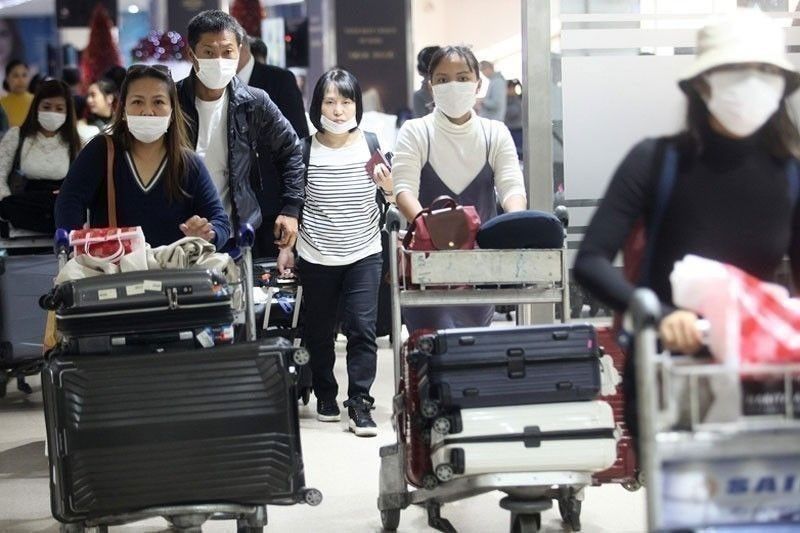DOH to adopt e-Arrival Card system for travelers

MANILA, Philippines — To streamline the arrival requirements for travelers, the government is adopting an electronic Arrival Card (e-Arrival Card) system in the country.
According to the Department of Health, pre-registration to the e-arrival platform shall be mandatory starting Nov. 1. The DOH noted that only the travel details, profile and health declarations will be requested in the system.
After registering, a QR code will be generated as a “scan and go” mechanism to reduce processing time at points of entry.
The e-Arrival Card, the DOH said, is free of charge and may be temporarily accessed through the official website onehealthpass.com.ph pending the launch of the new platform and website and its shift to the official government domain. It added that the government is already developing a unified platform that will transition the One Health Pass to e-Arrival card.
“Through the e-Arrival Card, we hope to reduce delays and eliminate inconvenience for our travelers,” said DOH officer-in-charge Maria Rosario Vergeire.
She added that, with the move, the DOH would be supporting the country’s tourism sector while ensuring the health and safety of both foreign and Filipino travellers.
Undersecretary Charade Mercado-Grande, DOH-health regulation team officer-in-charge, said inbound travellers to the Philippines should fill out the e-Arrival Card within 72 hours prior to departure to avoid inconveniences upon arrival.
Wear mask during Undas
Meanwhile, Dr. Ted Herbosa is reminding Filipinos visiting their departed loved ones on All Saints’ and All Souls’ Days to keep their face mask on as added protection against the new circulating COVID-19 subvariants.
Herbosa, University of the Philippines – Philippine General Hospital emergency medicine chair, stressed the importance of wearing face masks considering the huge crowd in cemeteries on those days.
“Let us continue wearing the mask in crowded places, even in cemeteries. Although it (cemeteries) is outdoors we are expecting a lot of people that would be going there. So it is important that we wear a mask,” Herbosa said partly in Filipino during yesterday’s Laging Handa public briefing.
He also recommended that all local government units (LGUs) ban the entry of unvaccinated individuals in cemeteries.
The new Omicron subvariant XBC that has been detected in the Philippines is now causing a COVID-19 surge in Singapore, he noted. The XBC subvariant is a recombinant of the BA.5 and Delta variants that triggered a COVID-19 surge last year, threatening the capacity of the country’s health system to cope.
“It is a bit alarming, although it is of the Omicron and not of the Delta variant. We know that the Omicron have mild symptoms,” Herbosa said while noting that it could still lead to death, especially among the elderly and those with comorbidities.
While he is not seeing the current situation in Singapore happening in the Philippines, Herbosa stressed the need for people to strictly observe the minimum health protocol. And even as he supports the move to lift the mask mandate in open spaces, he said people must still wear masks in open but crowded areas.
“It is very important because we have many events ahead of us. There is the All Saints’ Day, Christmas. We have to be wary,” he added.
Herbosa also noted the concern of health experts that the new subvariants can re-infect the vaccinated and those who have already been infected with the virus.
Following this, he advised those going to malls as well as children attending face-to- face classes starting November to keep wearing masks.
He said the emergence of new COVID variants could be prevented if the transmission of the virus can be stopped. He cited a World Health Organization statement that said the virus is still in the active phase and new subvariants are emerging.
Meanwhile, Interior Secretary Benhur Abalos is urging LGUs to address the estimated 1.4-million backlog in the encoding of the government’s official digital vaccination certificate, VaxCertPH.
Abalos said LGUs should prioritize the encoding of vaccination records in the Vaccination Information Management System or the official central database of VaxCertPH as he cited a Department of the Interior and Local Government record that showed the database has a backlog of 1,460,582 vaccination records.
“This has long been an issue in our LGUs as we try to improve the inventory of Filipino citizens who have registered for VaxcertPH. We implore our LGUs to work double time in addressing their backlogs in the VIMS,” Abalos said in a statement.
Over 334,000 was due to missing records, over 308,000 were not recorded due to lack of manpower, another 243,000 due to late submission, almost 123,000 with incomplete data, and an estimated 110,000 for missing data fields. – Romina Cabrera
- Latest
- Trending






























